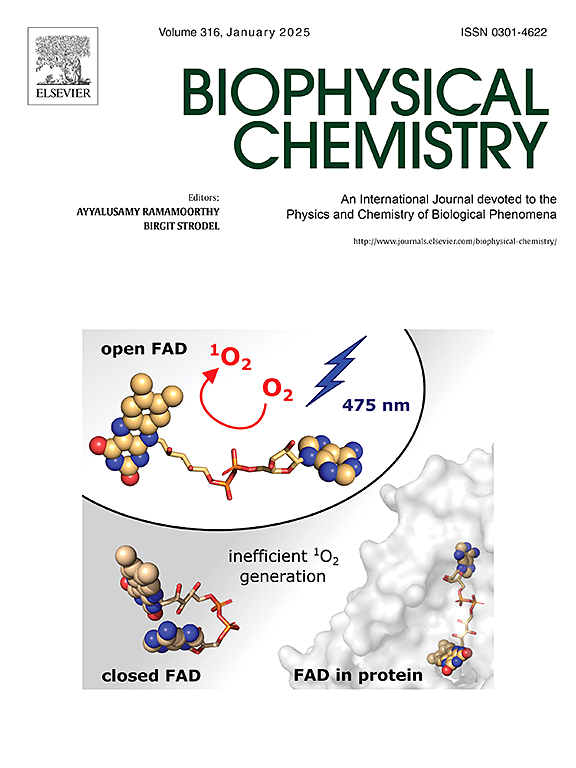Mapping the metabolic perturbations associated with palmitate-induced oxidative stress and development of insulin resistance in skeletal muscle cells
IF 2.2
3区 生物学
Q2 BIOCHEMISTRY & MOLECULAR BIOLOGY
引用次数: 0
Abstract
The development of insulin resistance (IR) in the skeletal muscle has been identified as one of the hallmarks of Type 2 diabetes mellitus (T2DM). Studies have shown that palmitic acid (PA), a saturated free fatty acid (FFA), can contribute to the development of IR in various insulin-responsive tissues via the induction of oxidative stress and mitochondrial dysfunction. The specific molecular mechanisms and metabolic changes that lead to IR development are not completely defined, and a better understanding of these mechanisms is needed. Our study aims to identify metabolites linked with the development of IR in skeletal muscles using PA and map the major metabolic pathways involved. Rat-derived L6 myotubes were exposed to PA to establish IR. Cellular and biochemical experiments were performed, and the metabolic perturbations associated with the induction of oxidative stress and IR were identified using 1H NMR-based metabolomics. PA exposure was associated with a loss of cellular viability due to lipid accumulation in the myotubes. This was associated with an induction of oxidative stress, loss of function, and reduced mitochondrial membrane potential. The metabolic fingerprint linked with the development of oxidative stress and IR in skeletal muscles was identified, wherein significant perturbations in the levels of methanol, dimethylamine, serine, lysine, proline, glycerol, and alanine (p < 0.05) were observed. The dysregulated metabolites and pathways identified in this study can be proposed as biomarkers for detecting palmitate-induced oxidative stress and development of IR in the skeletal myotubes – phenotypes associated with T2DM and related metabolic disorders.

绘制与棕榈酸盐诱导的氧化应激和骨骼肌细胞胰岛素抵抗发展相关的代谢扰动
骨骼肌胰岛素抵抗(IR)的发展已被确定为2型糖尿病(T2DM)的标志之一。研究表明,棕榈酸(PA),一种饱和游离脂肪酸(FFA),可以通过诱导氧化应激和线粒体功能障碍,促进各种胰岛素应答组织IR的发展。导致IR发展的具体分子机制和代谢变化尚未完全确定,需要更好地了解这些机制。我们的研究旨在利用PA识别与骨骼肌IR发展相关的代谢物,并绘制相关的主要代谢途径。将大鼠衍生的L6肌管暴露于PA以建立IR。进行了细胞和生化实验,并使用基于1H nmr的代谢组学鉴定了与氧化应激和IR诱导相关的代谢扰动。PA暴露与肌管中脂质积累导致的细胞活力丧失有关。这与氧化应激的诱导、功能丧失和线粒体膜电位降低有关。鉴定了骨骼肌中与氧化应激和IR发展相关的代谢指纹,其中甲醇、二甲胺、丝氨酸、赖氨酸、脯氨酸、甘油和丙氨酸水平的显著扰动(p <;0.05)。本研究中发现的失调代谢物和途径可以作为检测棕榈酸盐诱导的氧化应激和骨骼肌管IR发育的生物标志物-与T2DM和相关代谢疾病相关的表型。
本文章由计算机程序翻译,如有差异,请以英文原文为准。
求助全文
约1分钟内获得全文
求助全文
来源期刊

Biophysical chemistry
生物-生化与分子生物学
CiteScore
6.10
自引率
10.50%
发文量
121
审稿时长
20 days
期刊介绍:
Biophysical Chemistry publishes original work and reviews in the areas of chemistry and physics directly impacting biological phenomena. Quantitative analysis of the properties of biological macromolecules, biologically active molecules, macromolecular assemblies and cell components in terms of kinetics, thermodynamics, spatio-temporal organization, NMR and X-ray structural biology, as well as single-molecule detection represent a major focus of the journal. Theoretical and computational treatments of biomacromolecular systems, macromolecular interactions, regulatory control and systems biology are also of interest to the journal.
 求助内容:
求助内容: 应助结果提醒方式:
应助结果提醒方式:


